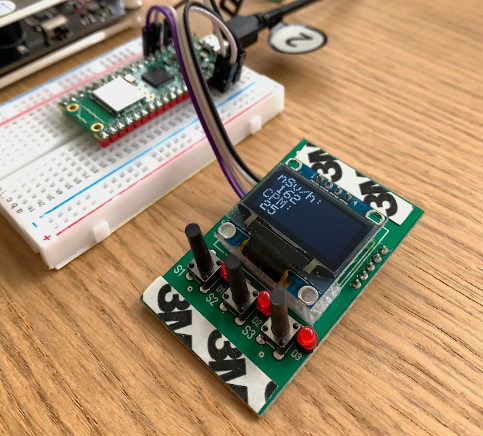This prompted him to create a device using a Raspberry Pi Pico W. “Radiation is not something you can feel, see, taste, hear, or smell,” he says. “So, I created a device designed to be a silent observer of the ionising radiation levels in my city. I wanted it to become the sixth missing sense, if you will.”
Keeping count
As well as Raspberry Pi Pico W, the build includes an M4011 Geiger–Müller tube. It’s old technology, for sure – the concept was developed back in 1908 at the University of Manchester and it came into being 20 years later. “But I’ve never had an excuse to work with it, so I took it as a way to improve my knowledge,” Dmytro says. “It may be old, but it’s very important tech.”
At first, he tried to find all the components required to build a rudimentary Geiger counter from scratch before realising it would take him too long to locate everything he needed. “I then came across a pre-built module based on the M4011 which has a digital pin that can relay the tube’s pulse caused by an ionising event,” he continues.
“I configured an interrupt on one of the pins of my Raspberry Pi Pico W so it can listen and ‘remember’ the number of ‘ticks’ that the Geiger tube experiences over a period of time. Based on that, I can interpolate (or sometimes extrapolate) the current CPM (counts per minute).”
Stark warning
Understanding that CPM – while generally accepted and widely used in measuring radiation – doesn’t universally equate to dose rate, he implemented a conversion to sieverts per hour, a unit that allows radiation levels to be expressed. “Fortunately for me, DFRobot, the creator of the module, had an easy conversion formula for M4011,” Dmytro says. “So I decided to use that.”
Dmytro has placed the device next to a window in his apartment and it’s connected to an OLED screen so that he can keep an eye on the current radiation level. It’s also possible to check the device from afar.
“Raspberry Pi Pico W can push the readings to a server every few hours so I can keep track of what’s happening with the ionising radiation levels even if I’m not home,” he explains. “But, unfortunately, due to the power blackouts we’re having, the readings are not updated very often as I don’t keep the device plugged in any more.”
So far, the device has been showing around 25 CPM. “That’s what you expect from a tube like this in a ‘normal’ environment,” Dmytro says. “As for what reading would indicate a problem, well, I hope we won’t need to learn this,” he says. “But, overall if the readings are drastically higher than what they are at the moment, I’d interpret it as a problem that requires more thorough investigation.” Fingers crossed it never comes to that.



